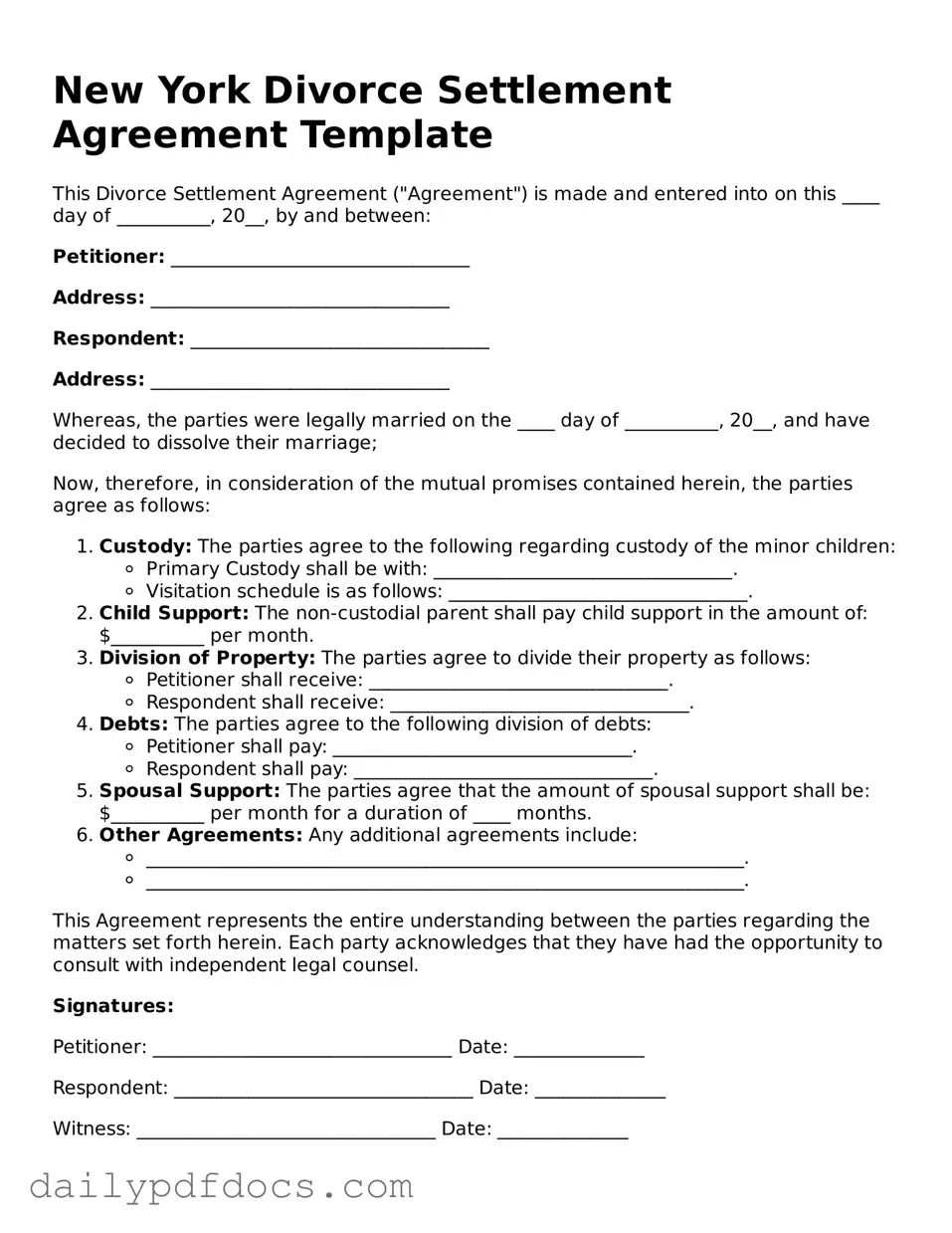What is a New York Divorce Settlement Agreement?
A New York Divorce Settlement Agreement is a legally binding document that outlines the terms of a divorce between two parties. It typically includes details regarding the division of assets, child custody arrangements, child support, and spousal support. This agreement serves as a roadmap for both parties to follow, ensuring that all important issues are addressed and agreed upon before finalizing the divorce. It can help to expedite the divorce process and reduce potential conflicts in the future.
How do I create a Divorce Settlement Agreement in New York?
Creating a Divorce Settlement Agreement involves several steps. First, both parties should gather all relevant financial documents, such as income statements, bank statements, and property deeds. Next, open communication is essential. Both parties must discuss and negotiate the terms of the agreement, ensuring that each person's needs and concerns are considered. Once an agreement is reached, it should be put into writing. It is advisable to have the document reviewed by a legal professional to ensure that it complies with New York law and adequately protects your interests.
Is a Divorce Settlement Agreement legally binding?
Yes, a Divorce Settlement Agreement is legally binding once it has been signed by both parties and approved by the court. This means that both individuals are required to adhere to the terms outlined in the agreement. If one party fails to comply, the other party can seek enforcement through the court system. It is crucial to ensure that the agreement is fair and reasonable, as this will help prevent disputes down the line.
Can I modify a Divorce Settlement Agreement after it has been finalized?
Modifications to a Divorce Settlement Agreement can be made, but they typically require a formal process. If circumstances change—such as a significant change in income, relocation, or changes in the needs of children—either party may request a modification. This usually involves filing a motion with the court and demonstrating that the changes warrant an adjustment to the original agreement. It is important to note that both parties must agree to the modifications, or a judge will need to determine if the changes are justified.
What happens if my spouse refuses to sign the Divorce Settlement Agreement?
If your spouse refuses to sign the Divorce Settlement Agreement, it can complicate the divorce process. In such cases, it may be necessary to seek mediation or legal assistance to facilitate negotiations. Mediation can provide a neutral environment where both parties can discuss their concerns and work toward a mutually acceptable solution. If an agreement cannot be reached, the case may proceed to court, where a judge will make decisions regarding the terms of the divorce.
Do I need a lawyer to create a Divorce Settlement Agreement?
While it is not legally required to have a lawyer to create a Divorce Settlement Agreement, having legal representation is highly recommended. A lawyer can provide valuable guidance, ensure that your rights are protected, and help you navigate the complexities of divorce law. They can also assist in drafting the agreement to ensure that it is clear, comprehensive, and enforceable. If you choose to proceed without legal counsel, be sure to conduct thorough research to understand your rights and obligations.
